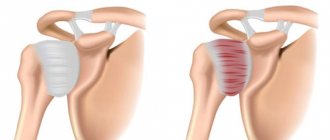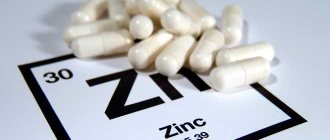Cardiologist
Chabaidze
Tamara Avtandilovna
2015
Make an appointment
Bradycardia is a pathological decrease in heart rate observed in patients of various ages. Develops against the background of acute or chronic heart disease. The threshold value for diagnosis is 60 heart muscle contractions per minute. Patients suffer from weakness, systematic loss of consciousness, dizziness and changes in blood pressure. Severe sinus bradycardia (40 heart rate/min) can lead to the development of heart failure. To prevent this, a pacemaker is implanted in the patient.
What it is
The term “bradycardia” refers to a decrease in the number of heartbeats by 15% compared to the age norm of a person.
In a healthy man, the heart beats on average 70 times per minute. In a newborn it works twice as fast. The rhythm of the sinoauricular node is a cluster of myocytes innervated by the endings of neurons of the autonomic nervous system. Scientists call it a pacemaker - a pacemaker. A wave of excitation arises in it, which, spreading along the conduction pathways (atrioventricular node and His bundle), triggers each contraction and stimulates the occurrence of the next one.
The heart rate depends on:
- state of the nervous system: when the sympathetic nerves are excited, the heart rate becomes more intense, the vagus nerves slow down;
- processes of excitation and inhibition in the cerebral cortex;
- functions of the endocrine system;
- concentrations in the blood of drugs, toxins, calcium, potassium and some other substances.
The cells of the sinus node suffer from arterial hypertension, increased pressure in the pulmonary circulation, cardiomyopathy, defects, angina pectoris and inflammatory processes of the myocardium. A slowdown in heart rate can be caused by degenerative changes in the sinus node, as well as damage to the conduction pathways, which disrupts the flow of impulses to the ventricles of the heart.
The International Classification of Diseases, 10th revision, codes slow heartbeat with code R00.1, classifying it as unspecified symptoms and abnormalities. If bradycardia is a consequence of sick sinus syndrome, ICD-10 recommends using code I 49.5, for conduction disorders (blockades) - I 44 - I 45. Arrhythmias in the newborn period are coded P 29.1.
Causes of bradycardia
One patient asked me a question: “How is it that the doctors say that my heart is absolutely healthy, but I suffer from bradycardia.” The causes of this symptom complex are divided into those caused by diseases of the cardiovascular system, and extracardiac (of another origin).
Experts divide bradycardia according to etiology into:
- Neurogenic , which is also called functional or vagal. It is caused by irritation of the vagus nerve during neuroses, intracranial hypertension, subarachnoid hemorrhage, renal or hepatic colic, gastric ulcer, acute glomerulonephritis.
- Endocrine . The change in heart rate is due to the ability of thyroid hormones to reduce the influence of the sympathetic nervous system on the heart and increase the importance of the parasympathetic department. A decrease in the production of aldosterone (mineralocorticoid) causes excessive excretion of water and sodium in the urine, which leads to dehydration and a decrease in blood pressure. The concentration of potassium in the blood increases, causing bradycardia.
- Toxic . This etiology can be either endogenous (intoxication due to uremia, hyperkalemia, fasting) or exogenous (infections, lead poisoning, nicotine).
- Medication . When taking some medications, a side effect occurs in the form of a decrease in heart rate.
- Myogenic – bradyarrhythmia of an organic nature, caused by direct damage to the sinus node in cardiac diseases.
- Constitutional-familial , caused by the genetic inheritance of the predominance of vagal tone, which leads to persistent bradycardia.
There is another cause of bradycardia, which cardiologists consider as a normal variant. If you are an athlete, then your resting heart rate most likely will not exceed 50-60 beats per minute. This is explained by a different level of neurovegetative regulation of cardiac activity in people experiencing excessive physical exertion. Read more about bradycardia in athletes in the article at the link.
Bradyarrhythmia detected in women during pregnancy requires special attention. In some expectant mothers, the heart adapts to the new position in this way. But sometimes a decrease in heart rate is a sign of pathology, so if you are expecting a baby, even a slight tendency to decrease heart rate is a reason to immediately consult a doctor.
Kinds
Cardiologists distinguish between an acute form of bradycardia - it can be observed in acute coronary syndrome, poisoning, some infectious diseases, as well as a chronic form, caused by coronary or hypertensive heart disease, pathology of the endocrine system, and prolonged intoxication.
From a clinical point of view, bradycardia can be:
- absolute – constant;
- relative - observed only in certain conditions, for example during hypothermia or at rest in trained people.
Depending on the severity:
- mild – reduction in the number of strokes from the age norm by 10 in one minute;
- moderate – by 20.
- strongly expressed - 30 or more.
One should not think that a small percentage decrease in heart rate is equivalent to the concept of “physiological bradycardia”. Sometimes a slight decrease in heart rate can be the “first bell” of a serious pathology, so you should always determine the cause of your arrhythmia.
Operation
Surgical treatment for bradycardia is used very rarely and only in cases where a decrease in heart rate significantly affects hemodynamics. The location and nature of the surgical intervention are determined by the cause of the bradycardia. For congenital anomalies in the development of cardiac tissue, surgical correction is done as far as possible in childhood to ensure normal growth and development of the child.
Surgical treatment is also necessary in the presence of tumors or other formations in the mediastinum. In rare cases, it is even necessary to remove tumors directly from the parasympathetic and sympathetic fibers. Typically, after such operations, normal heart rhythm is quickly restored.
In some cases, there is severe persistent bradycardia that leads to heart failure, but its cause is unknown or cannot be corrected. In these cases, surgical treatment will consist of implanting a special pacemaker. This device independently generates electrical impulses and delivers them to the desired points of the myocardium. This way, the lower sinus node rhythm will be suppressed and the heart will begin to pump blood normally. Nowadays, there are many different types of pacemakers that help restore full functionality and eliminate all symptoms associated with abnormal heart rhythms. In each specific case, the pacemaker model is selected individually based on the degree of circulatory impairment and the reasons that caused bradycardia.
Symptoms and signs
There is no specific sign of bradycardia. In the acute form, sudden dizziness, impaired consciousness, speech disorder such as “swallowing” words, fainting, and syncope are observed. Such conditions differ from attacks of neurological etiology in the absence of aura and seizures.
A chronic decrease in heart rate can manifest as general weakness, excessive fatigue, decreased memory and attention, irritability, insomnia, and shortness of breath during moderate physical activity. If you suffer from hypertension or angina, bradycardia can significantly worsen the course of the disease.
It should be remembered that chronic bradycardia can lead to persistent arterial hypertension and circulatory failure. If your heart works slowly, all internal organs do not receive the required amount of oxygen, but hypoxia is most dangerous for the brain.
Symptoms of the disease
Moderate course is rarely accompanied by obvious clinical symptoms. A severe form of pathology provokes:
- dizziness;
- weakness;
- fainting conditions;
- decreased muscle tone;
- blood pressure surges;
- profuse sweating.
Patients may experience difficulty breathing and severe chest pain. Representatives of the older age group are faced with impaired concentration, short-term memory loss, and episodic visual impairment.
Violation of myocardial contractile function leads to cerebral hypoxia. In the background, attacks of convulsions lasting up to 60 seconds may develop. This condition is considered by cardiologists as the most dangerous with confirmed bradycardia. The patient needs urgent help, since prolonged attacks of convulsions provoke cessation of respiratory activity.
Diagnostics
I often encounter a latent (hidden) form of bradyarrhythmia, when a person feels great, but during a routine examination a slow pulse is detected. More often, bradycardia can be assumed based on the patient’s complaints.
According to the Clinical Guidelines of the Federal State Budgetary Institution NNPCSSKh named after. A. N. Bakuleva Ministry of Health of the Russian Federation, it is advisable for the patient to undergo the following types of examination:
- Electrocardiography – it will allow you to clarify the cause of the changes (sick sinus syndrome, blockade, impaired ventricular repolarization), and identify concomitant types of arrhythmia.
- Holter monitoring - if the patient has a relative form, then a single ECG will not always confirm the presence of pathology, so the examination must be carried out over a long period of time - for 24 hours, and sometimes more. The patient lives as usual, and a special device records the ECG.
- Performing functional tests (with physical activity, carotid sinus massage, passive long-term orthostatic) helps to clarify the type of bradycardia.
- An echocardiographic study will make it possible to judge the anatomical changes of the heart, as well as the functional state of the myocardium.
The scope of examinations is chosen by the attending physician depending on the person’s age and the presence of concomitant diseases. You may additionally need to be referred for a chest x-ray, transesophageal electrophysiological study of the cardiac conduction tract, and consultation with doctors of other specialties.
It is important for us not only to diagnose the presence of this condition, but also to clarify the localization of the disorder in automaticity or conduction, as well as determine the cause - the underlying disease that caused the heart to slow down.
Diagnostic procedures
Diagnosis and treatment of bradycardia is performed by a cardiologist. The doctor examines the child or adult and collects data for the medical history. Close attention is paid to the patient's pulse, the sonority of heart sounds and the frequency of respiratory movements. If there are appropriate indications, the cardiologist can refer the patient to a neurologist, neurosurgeon, or infectious disease specialist.
The organic form requires an ultrasound of the heart. Ultrasound examination allows one to evaluate changes in the size of the heart muscle and identify foci of degenerative lesions. Load bicycle ergometry is aimed at determining the increase in heart rate under various volumes of physical activity.
Treatment
Modern science has not come up with a universal tablet to speed up the heart rate. The doctor selects therapy strictly individually. If you have a physiological decrease in heart rate, there are no subjective symptoms, and the heart rate is reduced by 10 - 15 per minute, it is likely that you will not need medication.
Treatment goals:
- Elimination of bradycardia and its clinical manifestations.
- Correction of other possible concomitant arrhythmias.
- Prevention of complications and subsequent occurrence of bradycardia.
Sometimes treatment of the underlying disease is sufficient - for example, with hypothyroidism, the heart rate normalizes with adequate intake of thyroid hormones into the body. If bradycardia is caused by taking medications, it is necessary to discontinue the drug or adjust its dosage.
An acute attack of bradycardia can overtake the patient suddenly. Timely provision of first aid will save a person’s life.
The main thing is not to get confused and remember that it is necessary to increase blood flow to the patient’s brain. You can read more about emergency measures in case of a sharp drop in heart rate here.
First aid
If there is a sharp decrease in heart rate due to bradycardia, when a person is close to fainting or has lost consciousness, he should be given first aid, which consists of the following:
- If the patient falls on the floor, then he must be turned over on his back, raise his legs, placing a cushion or pillow under them. It is advisable to maintain this situation until the arrival of doctors, whose call cannot be delayed . A conscious person must also be laid on a flat surface and his legs raised.
- Free your breath by unbuttoning the top button of your shirt and loosening your belt.
- If you lose consciousness, try to revive the person by patting him on the cheeks. If this doesn't help, spray your face with water.
- In case of deep fainting, inhaling products with a pungent odor (vinegar, ammonia) can bring a person to his senses. However, it should be remembered that ammonia (and even vinegar) must be handled very carefully, since if brought close to the nasal passages, it can cause severe bronchospasm , including respiratory arrest .
- If fainting persists and none of the above remedies help, care should be taken to ensure that the patient does not become hypothermic. To do this, his body is covered with heating pads with warm water.
- After the patient returns to consciousness, you need to measure his pulse.
- If you know what medicine he takes, then you need to let him take it.
- The arriving ambulance team must be told in detail about all the actions performed.
- Even if you have the skills to administer injections, it is better not to do the treatment yourself. Drugs such as mezatone and atropine, which cause an increase in heart rate, are unlikely to be present in every person’s home medicine cabinet; they are only available with a prescription. However, in the case of a long-term course of the disease, they are still sometimes prescribed to the patient, after informing relatives about the precautions.
Medicines
The table provides a list of medications used for bradycardia of various origins:
| Drug Cause of bradycardia | Atropine | Isopre-naline | Adrenalin | Dopamine | Theophylline | Amino-fillin | Levo-thyroxine | Lityronine | Antibiotics | Glucagon | Digoxin-specific antibodies | Calcium chloride or gluconate |
| Sick sinus syndrome | + | + | + | + | + | + | ||||||
| Atrioventricular block | + | + | ||||||||||
| Hypothyroidism | + | + | ||||||||||
| Lyme disease | + | |||||||||||
| Toxic effect | ||||||||||||
| Beta blockers | + | + | + | |||||||||
| Digoxin | + | |||||||||||
| Calcium channel blockers | + | + |
Sometimes drug treatment does not bring the desired effect. In such cases, the issue of implanting a pacemaker is decided.
The American Cardiovascular Association, in its 2015 recommendations, emphasizes that treatment of bradycardia begins with assessment of basic vital parameters (respiration, blood pressure, oxygenation) and their correction.
conclusions
Patients with bradycardia should be thoroughly evaluated. This symptom rarely occurs on its own; more often it is secondary (for example, with hypothyroidism, or as a side effect of taking antihypertensive drugs).
Although a person can, after reading the instructions, independently prescribe medications for bradycardia, this does not replace the advice of a qualified specialist. Treatment should always be tailored to each case of bradycardia before it becomes necessary to urgently treat a person experiencing syncope.
Folk remedies
It is often necessary to warn “traditional medicine lovers” about the dangers of herbal medicine. Medicinal plants have not only indications, but also unwanted side effects. Moreover, it is almost impossible to select the exact dosage of the active substance in the decoction or tea. And most importantly: the effectiveness of using “grandmother’s” recipes has not been proven by modern science.
If you like to supplement the treatment prescribed by your doctor with non-traditional recipes, check out the list of the most popular and popularly recognized ones here.










